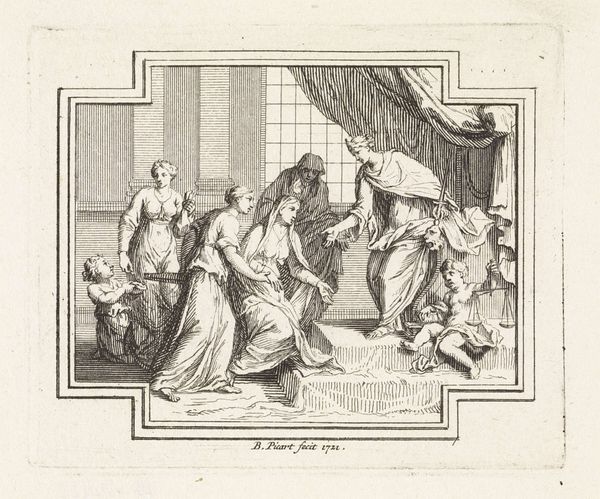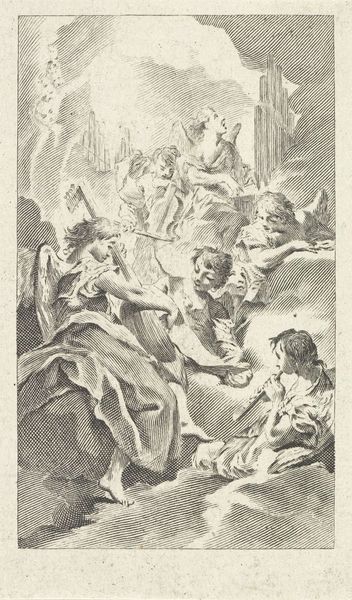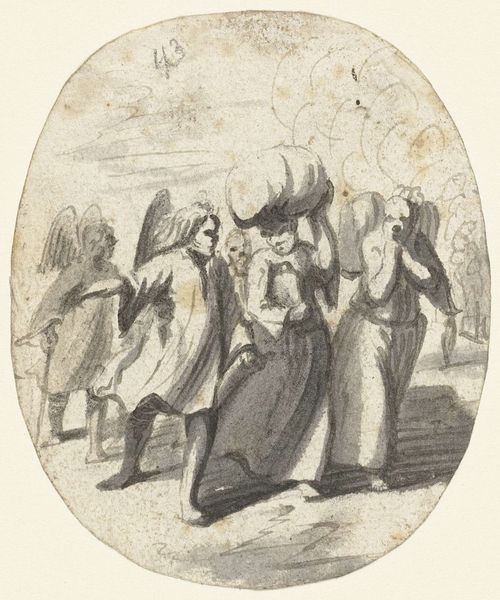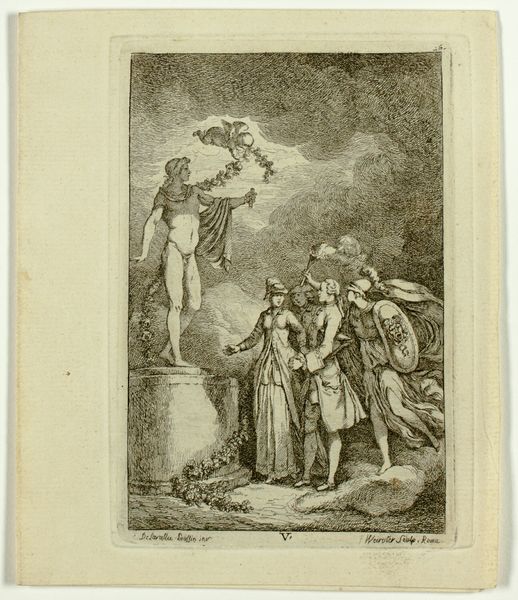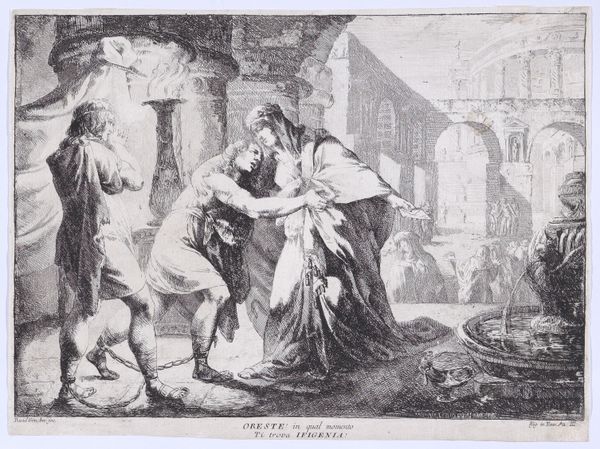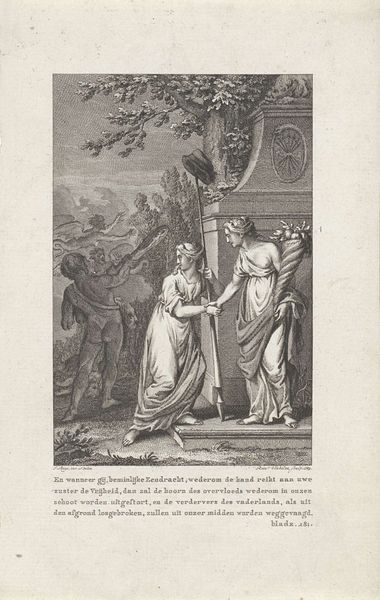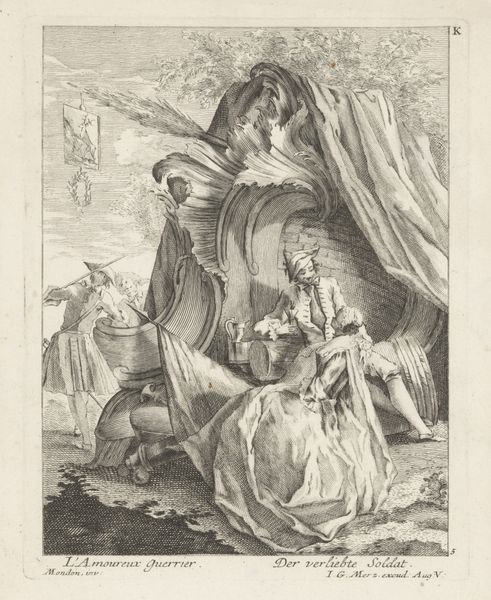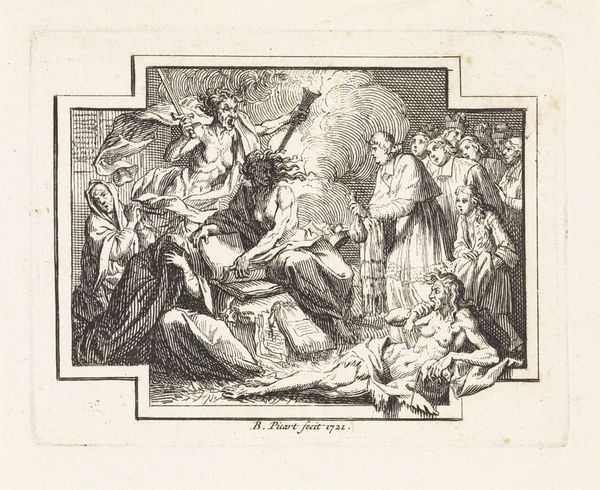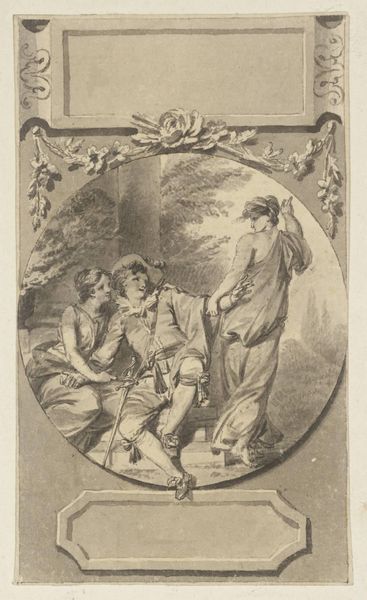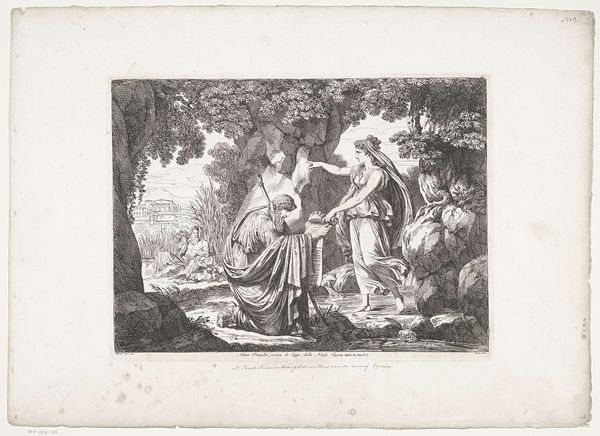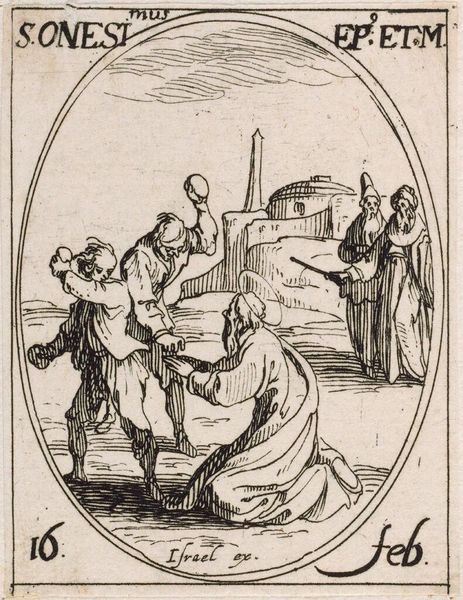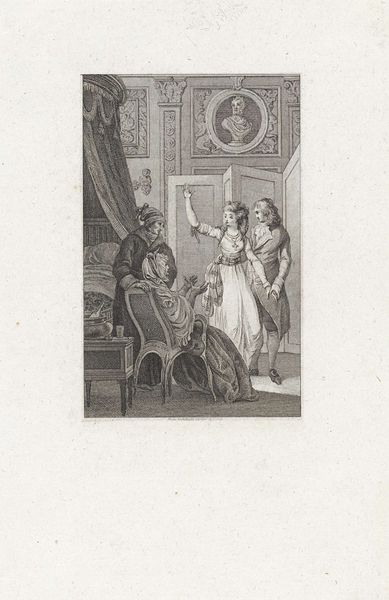
Copyright: Public Domain: Artvee
Editor: This is "Saint Celestine V Renouncing the Papacy, after Mattia Preti," a pencil drawing on paper made in 1761 by Jean-Honoré Fragonard. The starkness of the medium and the scene—a pope literally giving up his crown—creates such a somber mood. What do you see in this piece beyond that initial impression? Curator: Oh, somber for sure, but I sense something else winking behind those serious eyes... This isn't just history, it's theatre! Fragonard, even when copying another artist, couldn't help but inject his characteristic drama. Notice how Celestine, centered, practically offers up his papal tiara as if it's a burdensome prop in a play he's tired of. It's all in the staging, isn’t it? Editor: That's interesting; I didn't quite see it as theatre. But the placement of the figures… It’s very deliberate, like a tableau. Curator: Exactly! The supporting cast of monks huddled around him, almost whispering their approval or shock - ambiguous, delicious! And did you spot the figure sprawled on the steps? Is that despair, exhaustion, or pure cheeky boredom? Fragonard isn’t just showing us a historical event. He's giving us a peek at the human comedy *within* it, isn’t he? Tell me, does it feel objective, or biased somehow? Editor: Definitely not objective. It feels like he's editorializing, making Celestine seem almost relieved. Curator: Relief is a lovely word for it. A burden lifted... Or was it a stage act performed, rather clumsily, by someone weary of the performance required of them? Food for thought, eh? Editor: Absolutely. I’ll definitely be looking at Fragonard's work differently now. It's amazing how much personality can come through, even in a copy.
Comments
No comments
Be the first to comment and join the conversation on the ultimate creative platform.

